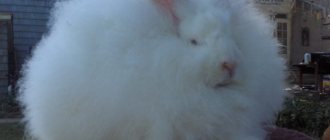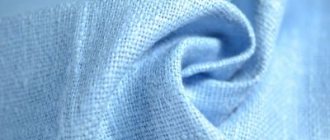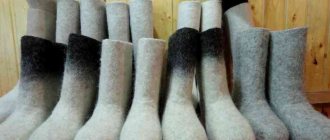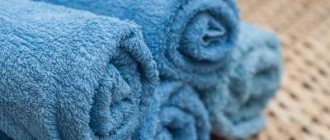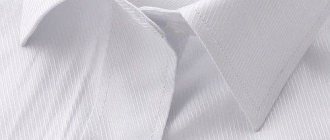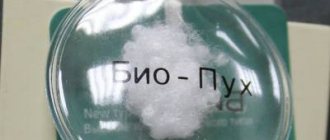Today we will look in detail at how to wash a blanket in a washing machine. Today everyone has such textiles - terry, fleece, plush, wool, microfiber, bamboo and other fabrics. The products are used as a bedspread, an additional blanket, or as decor. They are different - thick, thin, shaggy, smooth, large, small. Sooner or later the time for bath procedures comes. And then housewives are faced with a logical question: is it possible to wash this blanket in a washing machine or will it have to be done manually? Or maybe it’s time to prepare the package for dry cleaning?
We have great news for you - almost any item can be washed without the help of professional services. It’s just that some items are easier to wash, others are more difficult. We will analyze the topic of washing blankets in a washing machine in the most detailed way, give the necessary instructions, and introduce you to important subtleties. If you are ready to test your strength, welcome to our article!
Secrets of machine washing efficiency
How to choose the right parameters
Washing blankets will be effective if you study the information on the product label. The parameters for automatic washing will be different, so before washing the blanket, you need to pay attention to the type of material.
Synthetic items are easy to wash, you just need to select a program for synthetics. The main parameter is temperature. For acrylic, faux fur and polyester, it should not exceed 40 degrees. Faux fur does not like spinning in the machine: it must dry on its own.
Delicate fabrics require careful care. To avoid damage to the fibers, it is better to hand wash fur, fleece, cashmere and wool items. This is a labor-intensive process, not all housewives have the time and desire for it, so you can use delicate washing. Smooth rotation of the drum minimizes the negative effect on the material. It wiggles in a way that is similar to what happens when you wash it by hand. Delicate fabrics should not be wrung out.
Note! Information on how to wash a blanket when it is covered in stains is especially relevant for those who have small children. The product must first be soaked using a stain remover.
What you need to consider for quality washing
Crumple up small items before loading, and roll up large items.
The drum must hold at least 5 kg of laundry. Also, you cannot load an item that weighs more than the instructions for the automatic washing machine allow.
Additional Information! Recommendations on how to wash a blanket in a washing machine are based on its property of increasing weight when wet. This nuance must be taken into account when loading.
You should choose the spin speed carefully. It is better not to wring out soft fabric with fine fibers. Let it dry longer, but not deform.
No need to twist. Remove excess water using smoothing movements, then shake and hang the product on a clothesline.
It is better to avoid automatic drying for synthetic and delicate fabrics.
Blankets are cleaned with concentrated liquid or gel products, because they do an excellent job of removing dirt and are easier to wash out.
Washing in an automatic machine - step-by-step instructions
So, if the manufacturer's recommendations allow machine processing, then follow the following points.
- Check for stains and damage. Pre-treat the stains with a special product, and sew the damaged seams.
- Load into the washer, distributing evenly throughout the entire drum.
- Choose a washing program (delicate, wool, or manual for synthetic fabrics, the “Synthetics” program is suitable). Water heating should not exceed 30-40 degrees.
- If the device allows you to select the spin speed, select the lowest one. This will prevent the laundry from becoming deformed, as well as other damage.
- It is recommended to double the number of rinses.
- The Drying function cannot be used.
- Wash the item separately from other laundry to prevent overloading the washing machine.
If you follow all the recommendations, the washing result will be more than satisfactory.
Caring for artificial fabrics
Synthetic fabrics tolerate machine processing more easily than others. Therefore, there is no need to worry about their integrity and condition. They are not difficult to care for, and in most cases a delicate wash cycle is not required. Let's look at some of them in more detail.
Acrylic, polyester, faux fur
Acrylic items, as well as polyester items, can be washed in any program, at a temperature of no more than 40 degrees.
Faux fur items are also easy to care for. But they need to be washed without spinning, with water heating at 40 degrees. Before processing, it is recommended to shake them thoroughly to get rid of settled dust.
Synthetic products should be dried in a horizontal position, in a dark place, avoiding direct sunlight and exposure to heating devices.
Fleece
Fleece blankets are soft to the touch and suitable for use as a blanket. They can be washed both manually and in a machine. They do not accumulate moisture and dust, so they do not need soaking.
You should wash on a delicate cycle, without spinning, with water heated to 30 degrees.
Do not use conditioner. This may affect the water repellency of the fleece.
You can’t dry it on a radiator; it’s better to dry it or just hang it on a rope.
Microfiber
Microfiber bedspreads are easy to use and have hypoallergenic and antibacterial properties. But you need to beware of high temperatures, so drying them on a radiator is unacceptable.
How to properly care? Microfiber items are quite wear-resistant and color-fast. Therefore, when using daily, wash them at least once a week. But consider the following points:
- Choose the minimum temperature setting. Bedspreads made of this material are easy to wash, so a temperature of 20 degrees will be enough.
- Do not use products that contain chlorine. Give preference to liquid powder or shampoo.
- Dry flat, away from artificial heat sources. This will prevent possible deformations.
- Do not iron after drying.
Plush
Furry plush blankets, or “grass” as they are also called, can last for many years if treated with care. Having a spacious washing machine makes cleaning them easy. To wash plush in an automatic machine, you need to adhere to the following:
- Before placing it in the drum of the machine, shake the product several times to remove dust.
- Set the temperature to 30–40 degrees, select the “Synthetics” program.
- The number of revolutions during spinning should be minimal or even absent.
- Dry the item in a horizontal position and in a draft. It is advisable to ensure that it dries as quickly as possible in order to prevent the appearance of a rotten smell.
It is preferable to wash plush products with long pile by hand. But if you use a washing machine, the mode should be delicate.
If there are stains, take the item to the dry cleaner, where they will be removed using professional means.
Low-maintenance synthetic bedspreads are very easy to clean. To ruin such a thing by mechanical processing, you need to try pretty hard. The main thing here is the selection of the mode, the absence of spinning and proper drying.
How to wash by hand
Before you wash a large blanket at home by hand, you must follow the following sequence of steps:
- fill the bathtub with water at room temperature;
- dissolve the detergent;
- after immersing the blanket, wait 15 minutes;
- wash the item with light movements without twisting or stretching;
- rinse the product;
- Gently straighten and hang on a line to dry. The water will drain naturally.
How to keep it soft?
To keep the product soft, you need to choose the right detergents. Concentrated gels and special shampoos in combination with conditioners are ideal. They contain enzymes that can cope with dirt at low temperatures without damaging the fiber structure.
Treatment agent
For washing blankets with different compositions, the following are suitable:
Laundry concentrate Laska “Care and restoration” will provide gentle cleansing and prevent the formation of pellets, and add softness without the use of conditioner. For delicate fabrics, the “Wool and Silk” caress is suitable. Price from 180 to 250 rubles per 1 liter.- Organic washing gel Sinergetic removes dirt at a temperature of 20-60 degrees, cares for fibers. Suitable for delicate fabrics and children's items. Price 320-350 rubles per 1 liter.
- Meine Liebe gel concentrate is designed for hand and machine washing of delicate fabrics. Protects against pilling, cares for natural fibers, and is effective in combating stains. Price from 280 to 330 rubles per 800 ml.
Air conditioner
Fabric softeners perform several functions:
- soften the fabric;
- remove static electricity;
- make ironing easier or eliminate the need for it.
Features of washing terry products
It is recommended to wash at low speeds to preserve the structure of the material. Using a special ball will help keep the terry cloth soft.
Such an item should not be placed in a basket with dirty laundry, because this material quickly absorbs moisture and odors.
If you use powder, the pile will become unpleasantly hard. You should prefer a gel or liquid product. Rinse well. It is better not to iron to keep the pile pleasant to the touch. The product must be dried away from sunlight. For this purpose, a ventilated room is required.
Note! Pre-soaking in salted water will help make the product pleasant to the touch.
How to dry a blanket correctly
In order for the blanket to retain its shape, color and warming properties after washing, it is important to properly dry the product:
- It is best to place the blanket to dry in a horizontal position so that it does not stretch. A special clothes dryer rack works well. To prevent water from dripping from the product onto the floor, you can place terry towels or thick cotton fabric underneath.
- The item cannot be dried in bright sun or in the wind - the sun's rays and a strong draft will negatively affect the fabric and make it stiffer. In addition, under the influence of ultraviolet radiation, the bedspread may fade.
- A blanket made of wool or plush can take quite a long time to dry. But you can’t hang it on a radiator, on a heater or next to a stove - high-temperature exposure will deform the fabric.
- It is undesirable to hang a blanket on a rope or bar, much less leave it not completely straightened. The product will not only stretch, but will also warp, so it will no longer be so convenient to use.
It is better to dry the blanket on a special horizontal rack
The listed rules apply to both natural and synthetic blankets. Bedspreads seem resistant to deformation only at first glance, but in reality, improper washing and drying can significantly affect their condition.
How to solve laundry problems
The item may roll up and become hard due to an excessive amount of foam that is not rinsed well. To completely remove soap particles, you need to rinse the laundry vigorously.
Sometimes a washed product “shrinks” and becomes smaller. The problem is specific to wool. It is quite possible to return the original appearance of a thing. It is enough to wash it again without using soap or at least soak it in clean water. After this, dry the blanket, evenly stretching it to the sides. Using a steamer to solve the problem is even easier: you need to carefully steam the product from the inside out, stretching it a little. The wet pile will take the desired shape.
Pellets may appear on the fibers. To avoid this situation, you must:
- wash by hand more often, because friction against the drum of the washing machine can cause the material to pill;
- use mild detergents: powder increases friction, which is the main reason for the appearance of pills;
- avoid overdrying;
- limit the use of balls: they increase friction and lead to acrylic and wool rolling;
- remove the pellets with a special machine. The blade is not suitable for this purpose: it can damage the fabric.
What problems can arise after washing in an automatic washing machine and how to prevent them?
The most common problems that can arise after “mechanical” washing are shrinkage or rolling of the fibers. Why is this happening? There are several reasons:
- perhaps the rinsing was insufficient, so the material became hard and fluffy;
- if pellets appear, the reason for this may be the insufficient quality of the material from which the blanket is made or too frequent washing in the washing machine, which affected the structure of the material;
- incorrectly selected mode and temperature;
- errors in drying and spinning, after which the blanket is guaranteed to become deformed.
If the product, after it has been washed, becomes, in the bad sense of the word, unrecognizable, it’s okay, since many mistakes in this situation can be corrected. For example, in the case of pellets, you should resort to removing them using a special machine. Of course, people often use “homemade” methods, removing them with scissors or even a blade, but this is categorically not recommended, since we are talking about delicate materials (even synthetic ones) - you can seriously damage the surface of the blanket and only aggravate the situation.
What is the right thing to do if the blanket shrinks? You can simply try to wash it out. However, during the drying process you will have to periodically stretch it strongly. The main thing is to do this evenly to prevent even greater embarrassment. You can also use a steamer. In this case, you cannot stretch it too much, because after using the steamer the material will be very pliable. We must not forget that it is permissible to steam only from the inside out, so that the external feed is not damaged.
If the material has become very hard or even “needle-like,” most likely it has not been rinsed well. Everything is very simple - all you need to do is rinse it again without resorting to a washing machine.
If you want to get a brand new blanket, first you need to become thoroughly familiar with the care features of the material that will be its basis. It is better to choose based not on beauty, but on whether it will be possible to provide sufficient care so that it remains “in shape” for as long as possible.
How to Dry Clean
Dry cleaning a blanket
If you frequently wash a wool blanket, you can ruin its appearance. To make such a product clean while maintaining its softness, it makes sense to resort to a dry cleaning method.
We recommend:
How to wash a jacket with a membrane
It's easy to do:
- Shake the bedspread well before the procedure;
- Add a teaspoon of shampoo and vinegar to 100 ml of water, beat all ingredients;
- Apply the resulting paste with a brush to both sides of the item;
- spread on the floor;
- as soon as it dries, vacuum it;
- Finally, the item should be shaken out again.
Care Tips
- A baby blanket gets dirty a lot and needs to be washed often with a special detergent to protect the fabric fibers from excessive damage.
- If you have pets in the house, clean the cover with a brush before washing. If the animal sheds or has long hair, you can vacuum it, but you can use a roller with adhesive tape. This method is suitable for removing long hair.
- Treat stains that the machine will not remove, such as wine, grease or blood. You need to use additional products, namely laundry soap or chlorine-free bleach. Never bleach cashmere or wool items, as the fabric may lose color.
- Place the blanket in the machine, it should be alone. There is a little secret: for capes with fur, you can add tennis balls to the blanket to knock the dirt out of the item.
- Dry the blanket in a horizontal position. A wet blanket is very heavy and can become deformed under its own weight. When the fabric becomes damp, hang it in the fresh air, preferably outside, but a balcony is also suitable. Sometimes the bedspread takes a long time to dry and it develops a musty smell.
- If the blanket is made from natural materials, it is better to iron it, since such things can harbor mites and ironing will give the blanket a neat appearance.
- How to remove streaks from clothes
- How to remove pen paste from clothes
Large and voluminous
Washing a large, voluminous blanket is a difficult task for a fragile woman, so you definitely need an assistant with physical strength.
In a private home, you can wash a large item in the same way as for carpets . Necessary:
- Hang a blanket outside.
- Prepare a soap solution.
- Apply the liquid with a brush, paying attention to the most contaminated areas.
- Rinse thoroughly with clean water from a hose.
- Dry, avoiding direct sunlight.
If none of the methods is suitable, there is only one way out - professional dry cleaning.
This video will show you how to clean a large blanket:
Selecting the correct temperature for the washing mode
It is not enough to choose the right program for the fabric and type of product; you also need to understand which temperature regime is most optimal for a particular situation:
- cotton – temperature 90-95 degrees, spin set to maximum speed;
- manual mode - delicate expensive fabric is processed, cleaning occurs at a slow pace, and spinning at low speeds (temperature 30-40 degrees, the icon on the clothes is a hand lowered into the basin);
- fast - ideal cold treatment option for small stains, refreshing laundry (working time - 30 minutes, maximum speed is automatically turned on during spinning);
- delicate - similar to the manual mode, but spins, you can wash “capricious” fabrics, sneakers, sneakers, a down jacket, a wadded blanket;
- intensive - the water is heated to 60-95 degrees and intensive washing of heavily dirty items is carried out;
- wool - involves careful washing of woolen items that have the ability to shrink and lose their appearance if treated incorrectly (water heating is minimal - 30-40 degrees, no spin);
- normal (everyday) - the best option for washing clothes that are not very dirty, suitable for daily use (cycle duration does not exceed 1 hour, temperature 30 degrees);
- eco - program for economical consumption of water and electricity while maintaining the quality of washing at 30 degrees;
- synthetics - allows you to tidy up synthetic products, it is better to stop the choice at 60 degrees, maximum spin;
- for children - it is supposed to clean heavily soiled items (water is heated to 60-90 degrees, double rinse cycle).
Washing modes and temperatures in different washing machines may differ in names and set of functions. The work can be affected by loading - horizontal or vertical type. For each type of model, a mandatory set of programs is provided.
Dry blanket care
You can refresh your home textiles without resorting to grueling washing or using washing equipment. Heavy volumetric bedspreads are passed over the surface with a soft brush to remove crumbs, hairs and raise the pile. A vacuum cleaner with a small attachment that allows you to remove dry dirt from deep within the fabric will also help.
Small-sized blankets can be knocked out on the balcony and in the fresh air, and then left to ventilate. Often the dusty and stale smell goes away, and the soft pet continues to give warmth and comfort without additional hassle.
General conclusions about what mode to wash a blanket in
Proper storage and careful use of the blanket will protect it from frequent washing. Store such things without bags or in packaging that allows air to pass through.
- Pay attention to the symbols on product labels.
- Correlate the capacity of the washing machine with the size of the blanket (even though it will still absorb a lot of water).
- Roll the blanket before loading. Choose only delicate programs with or without gentle spin.
- Use special products, especially for natural materials.
- Dry flat out of the sun.
- It is better to entrust the care of natural fur to dry cleaning. It is unknown how the material will react to your attempts to put it in order.
Place moth repellent or a sprig of lavender next to the blanket for a pleasant scent. It is always better to shake the product from dust and air it in fresh air than to wash it.
Before buying items made from natural fabrics, especially large sizes, think about whether you can provide them with proper care.
What you need to know about hand washing
If you have the time and desire, then this will be the best option for caring for a blanket made of wool or fleece. This is the only way to wash cashmere blankets. More precisely, this is not even washing, but wet cleaning using soap foam and a brush. You can add a little vinegar to the soap solution; this product will restore the brightness of the blanket and get rid of unpleasant odors.
You need to clean the blanket on both sides, laying it out on a flat, hard surface - a sofa is not suitable for this. Then the product is dried in a shaded place and vacuumed. That's all! As you can see, it is not at all necessary to spend money on dry cleaning; you can easily do it yourself.
